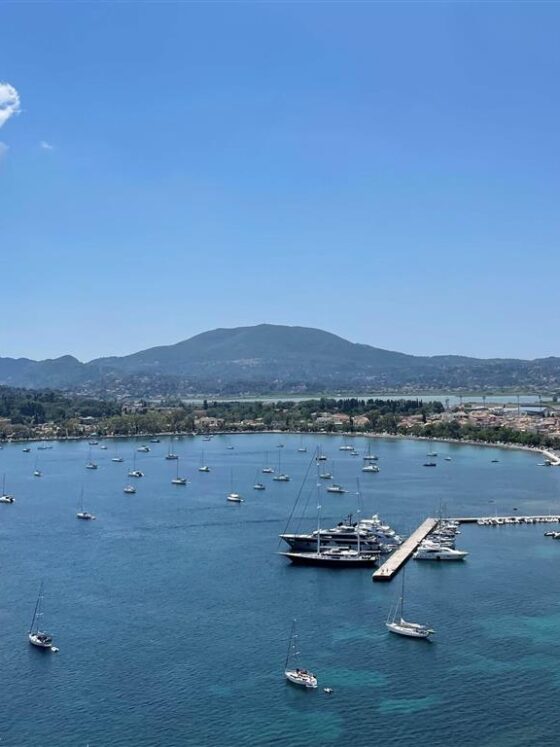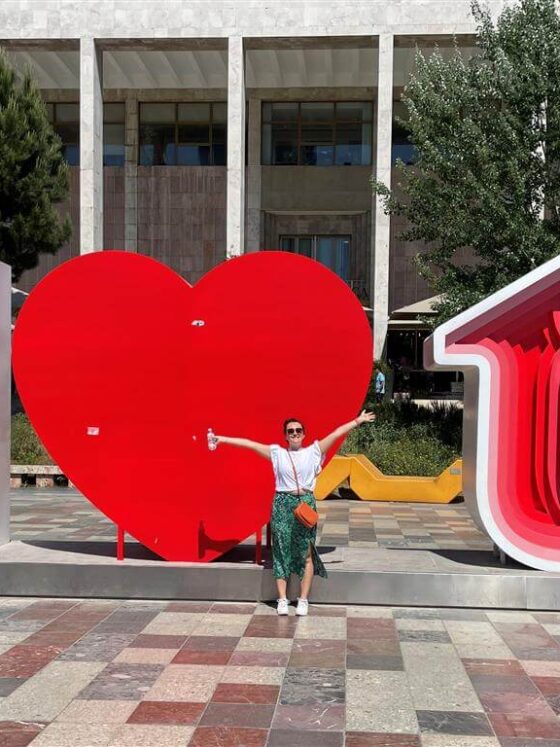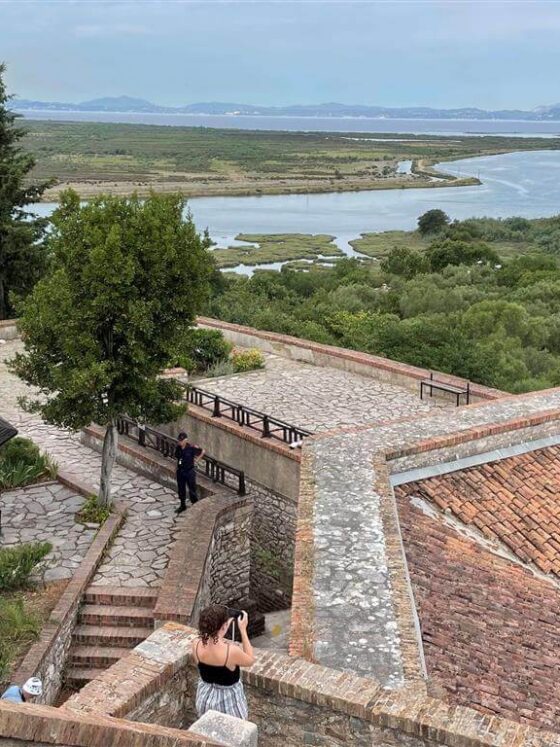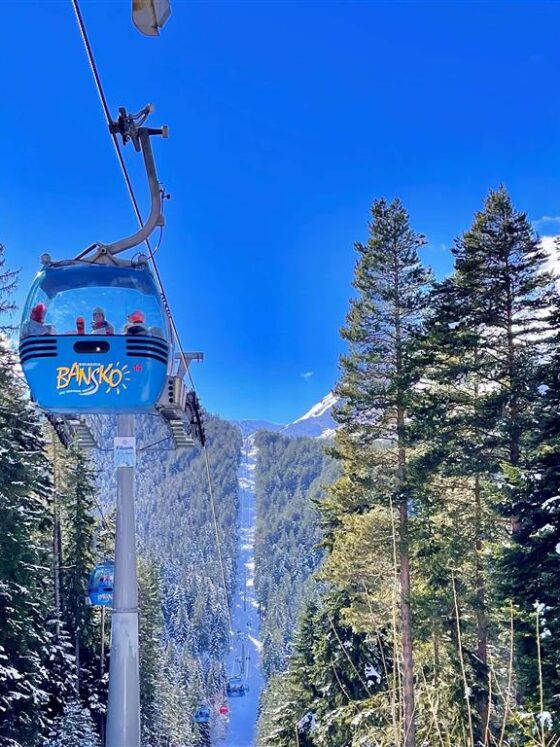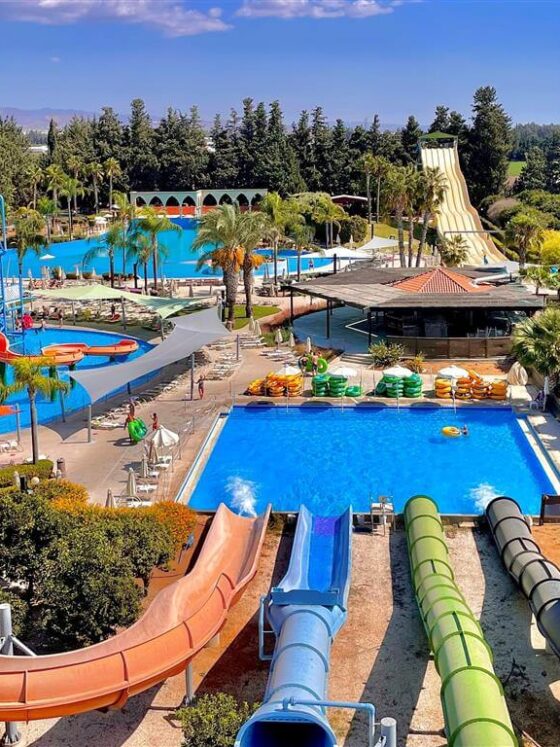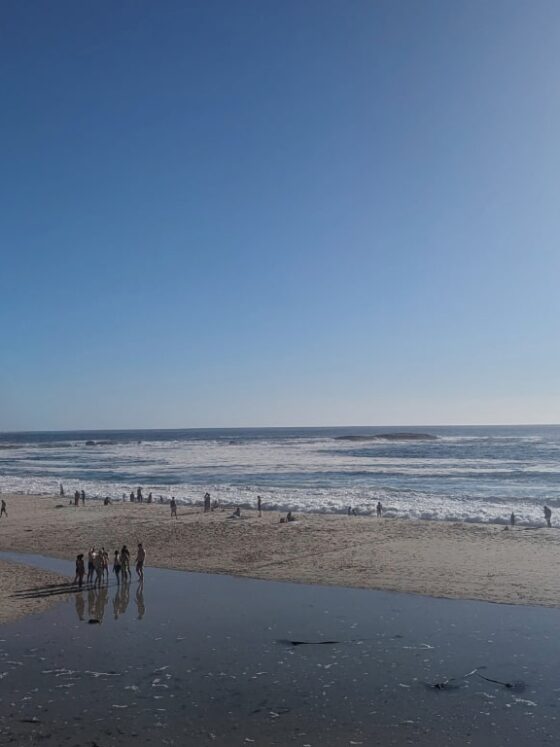One of the few places on Earth where you can see these little guys, the tarsiers in Bohol are not to be missed if you are planning a trip to the Philippines. In this blog, I will discuss the best places to see tarsiers in Bohol. If you want more information on Bohol itself then check out my Mini-guide to the whole island; Things to do in Bohol.
Equally, if you fancy seeing the Tarsiers in Bohol as part of a tour of this island then check out our 3-day scooter itinerary in Bohol!
I have also produced a full guide on the Philippines as a whole so if you want some more inspiration, ideas and travel tips for your own Philippines travel adventure then check out my Manual, Backpacking the Philippines.
Now, let’s take a look at how you can see some tarsiers in Bohol!
Tarsiers in Bohol
The Tarsiers in Bohol are some of the most adorable little creatures I have ever seen! I would describe them as a tiny baby Yoda with huge eyes, a very cute face and little E.T. fingers!
When I say the tarsiers in Bohol are tiny, I mean tiny! The tarsier only measures 4 to 5 inches in length when fully grown which is about the size of an adult hand! It will weigh no more than 150 grams when fully grown and is one of the world’s smallest primates.
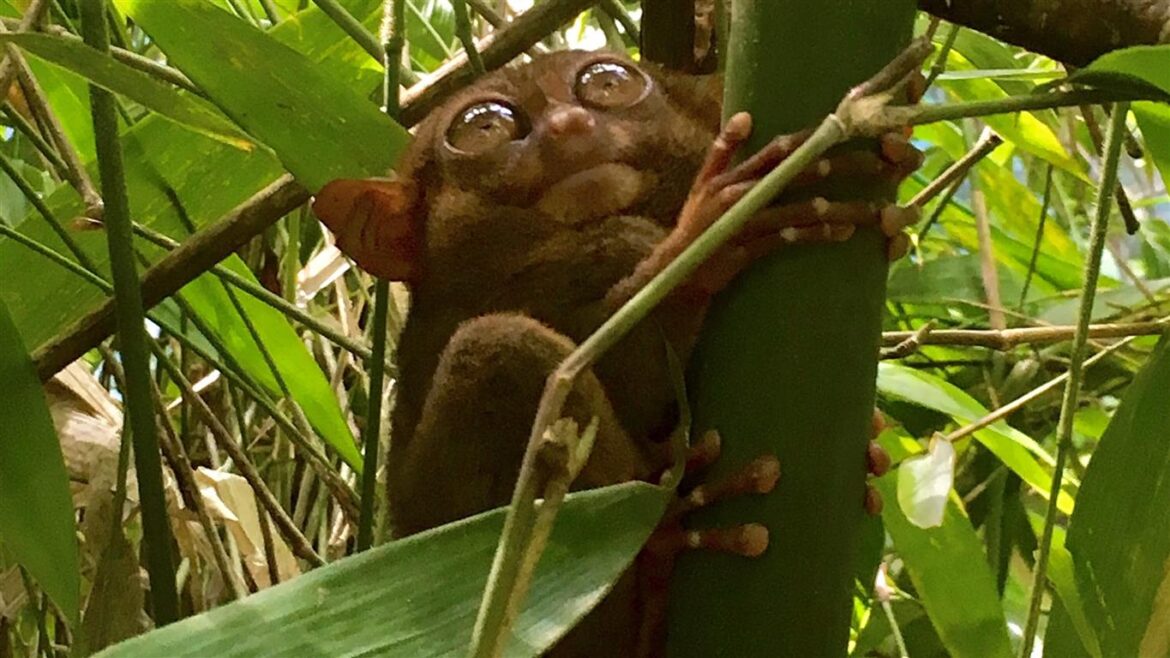
If, like me, you love a good fact then here are some more tarsier facts for you!
- Tarsiers are nocturnal creatures, sleeping in the day and hunting for food at night.
- A Tarsier’s eyes are larger than its brain and its stomach; its brain weighs about 4 grams!
- Much like the owl, the tarsier can rotate its head 180 degrees in each direction.
- Despite its size, the tarsier can leap even up to 10 feet.
- They hide in hollows close to the ground and feed mainly on fruits and insects such as cockroaches, crickets, and sometimes small lizards.
- There are only five species of tarsier known to exist. Four can be found in Indonesia and the fifth, the Philippine tarsiers or the Tarsius Syrichta species, lives deep in the woods of Bohol Island in the Visayas. The Philippine tarsiers can also be found in the islands of Samar, Leyte and Mindanao.
- When they gather, they have a chirping, locust-like sound, and when contented emit a soft sweet birdlike twill.
- To the locals, the Philippine tarsiers are known by various names, such as: “mamag”, “mago”, “maomag”, “magau”, “malmag”, and “magatilok-iok”.
In the 1960s, the Philippine tarsiers were a common sight in the southern part of Bohol, but now only an estimated 1,000 remain in the wild. This is largely due to the loss of natural habitat from deforestation and from poaching, where tarsiers in Bohol were caught and then stuffed to be sold as tourist souvenirs.
For this reason, sanctuaries and conversation areas are being set up in Bohol to protect the Philippines tarsier from the effects of deforestation and hunting.
Where to see Tarsiers in Bohol
There are two popular sanctuaries at which you can see the tarsiers in Bohol, the Tarsier and Wildlife Sanctuary in Corella and the Tarsier Conservation Area.
As with almost all sanctuaries in the world where tours are sold, there is always friction between recreating an animal’s natural habitat as closely as possible and introducing tourists and tourist trails within the sanctuary to generate revenue for further conservation. Sadly, the tarsier is known to be an emotionally volatile little creature, and when feeling stressed is known to commit suicide and so the need to ensure the balance is right and the environment in which the tarsiers in Bohol live and breed is so important.
With that in mind, I have described both of the sanctuaries at which you can see the tarsiers in Bohol to hopefully help you make an informed decision about which of these projects you wish to support.
The Tarsier and Wildlife Sanctuary in Corella
The Corella tarsier sanctuary, also known as the Philippine tarsier sanctuary, is part of the Philippine Tarsier Foundation Inc. The Philippine Tarsier Foundation is a non-profit organisation that was established in 1996. It is also supported by the two leading ecotourism organisations in the Philippines, the Department of Environment and Natural Resources and the Department of Tourism.
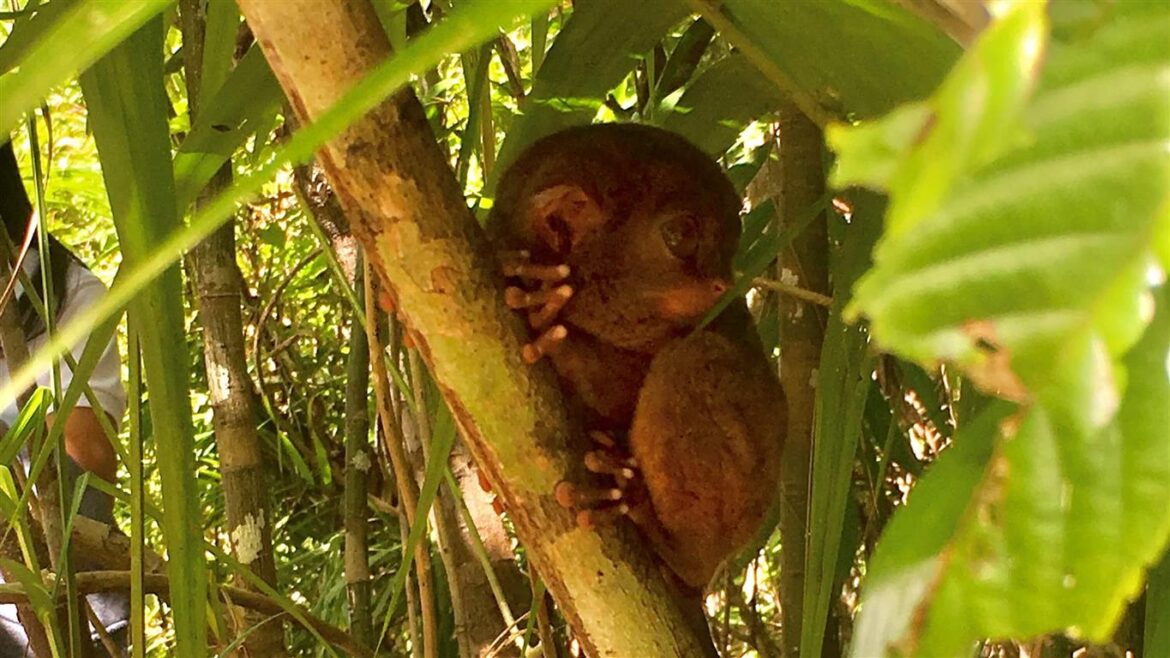
The Philippine tarsier sanctuary occupies 167 hectares in areas surrounding the towns of Corella, Sikatuna and Loboc as this area is a well-known natural habitat for the tarsiers in Bohol.
The Corella tarsier sanctuary also has a Research and Development centre which doubles as an educational centre where you can learn more about these amazing little primates.
Tours at the Philippine tarsier sanctuary
Tours at the Corella tarsier sanctuary are guided and after an initial briefing, you are taken along a trail in the forest to spot the little tarsiers. The guides have located the tarsiers earlier in the morning and so you will definitely see a few tarsiers.
The tours are relatively short, lasting between 15 and 20 minutes during which time you will see 2-4 tarsiers in different places along the route.
You are allowed to take photographs of them as long as you don’t use a flash and you will be asked to keep noise to a minimum to try and avoid stressing out these tiny primates.
Whilst the tour can be quite short, the benefit is that the vast majority of the 167 hectares of this sanctuary is devoted entirely to the tarsiers of Bohol, giving them dense and lush forest within which they can live naturally without fear of poaching, hunting or (more!) tourists.
Equally, as a not-for-profit organisation, the money generated from tourism is pumped back into the protection of the tarsiers of Bohol, which can ultimately only be a good thing!
Entry and Timings
Entry to the Philippine tarsier sanctuary is around 50 pesos ($1/£0.75) and the sanctuary is open from 9 am until 4 pm every day.
You will probably spend around 1-1.5 hours at the sanctuary with around 20 minutes of that time spent out in the forest with the guide looking at the tarsiers of Bohol.
The forest can be damp and wet underfoot so I suggest that you wear walking boots/trainers if you have these with you.
Getting There
The Philippine tarsier sanctuary is located at Tarsier Sanctuary Rd, Corella, Bohol Philippines which is close to the town of Corella.
The Sanctuary is 14km from Tagbilaran or 20km from Loboc. If you are staying nearly Alona Beach on Panglao Island then it’s around 30km to get to the Sanctuary.
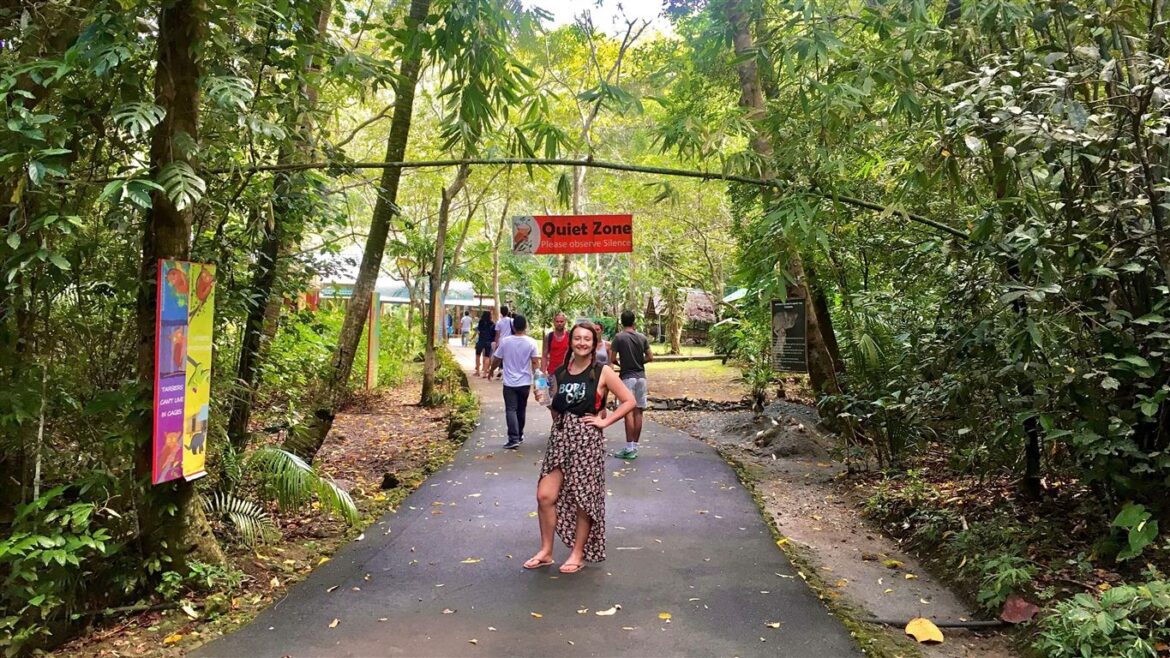
A visit to the tarsiers in Bohol is often part of a round trip to see the Chocolate Hills and a number of tour operators offer a stop at the Philippine tarsier sanctuary as part of a guided tour of the island. If you are going to take a tour then do check which tarsier sanctuary they stop at if you have a preference between the two.
Alternatively, hire a scooter for the day and head out yourself; the roads are quiet once you are away from Tagbilaran and you can stop where you want en route. I have put together a 3-day itinerary for ideas of where to go on a scooter tour of the island which you can read here.
The Tarsier Conservation Area in Loboc
The other location at which you can see the tarsiers in Bohol is the Tarsier Conservation Area in Loboc. This is the more well-known destination and one that is frequented by the majority of the tour operators in Bohol, probably because it is on the route to the Chocolate Hills.
Despite its popularity, this Conservation Area is not an officially designated sanctuary area for the tarsiers in Bohol.
It has not been officially approved as a tarsier sanctuary by the two government organisations that have approved the Corella sanctuary (the Department of Environment and Natural Resources and the Department of Tourism).
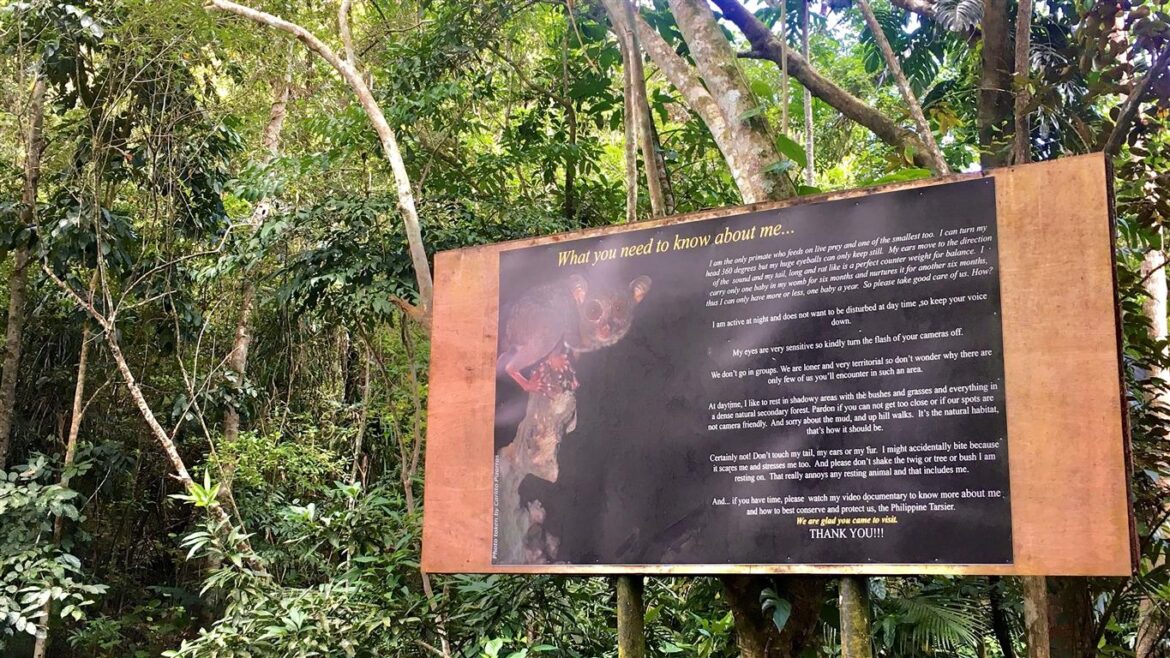
Further, it is run by a for-profit organisation and therefore it is possible that the business is being run to generate a profit for its stakeholders rather than for the continuing preservation of the tarsiers in Bohol.
I would say I have not seen or heard any evidence of this, and it may well be the case that the profits are being reinvested into the care and preservation of the tarsiers in Bohol; equally, I have not seen any evidence or heard anything from the Loboc Conservation Area to say that they do reinvest their profits (and if you were making a profit but putting profits back into a good cause, you would tell people wouldn’t you?).
I commonly hear that a lot of people have been to the Loboc Conservation Area when they first visit Bohol, primarily because they either did it as a part of a tour of the tourist spots in Bohol or because this conservation area has recently featured in the Lonely Planet guide to the Philippines.
However, those same people say they wish they had known a bit more about the background of both spots before visiting and may have made a different decision.
Tours at the Loboc Conservation Area
The tours at each destination for seeing the tarsiers in Bohol are similar.
At Loboc, you will again start with a briefing which will cover steps to avoid scaring the tarsiers as well as some history about these amazing primates. You will then take a route through the forest along a pebbled pathway with your guide who will point out tarsiers in the trees and provide further information about them during the tour.
Again, you are asked not to use flash photography, to keep noise to a minimum and under no circumstances to touch the tarsiers!
The tour will generally last around 30 minutes and again you can expect to see 4-6 tarsiers during your trip.
Entry and Timings
Entry to the Loboc Conservation area is around 80 pesos ($1.60/£1.15) and again I would anticipate that you would spend 1-1.5 hours at the conservation area to allow for the initial briefing, to read some of the information on the tarsiers in Bohol and to visit the souvenir shop and/or grab something to eat whilst you are there.
Again, as the tour takes place in the forest, do take walking shoes or trainers with you if you have them although the pathway is gravelled here and so is not usually that wet.
Getting There
The Loboc Conservation area is located at Loay Interior Road, Loboc, Bohol Philippines.
It is around 36km from Tagbilaran, 10km from Loboc or around 50km from the Alona Beach part of Panglao Island.
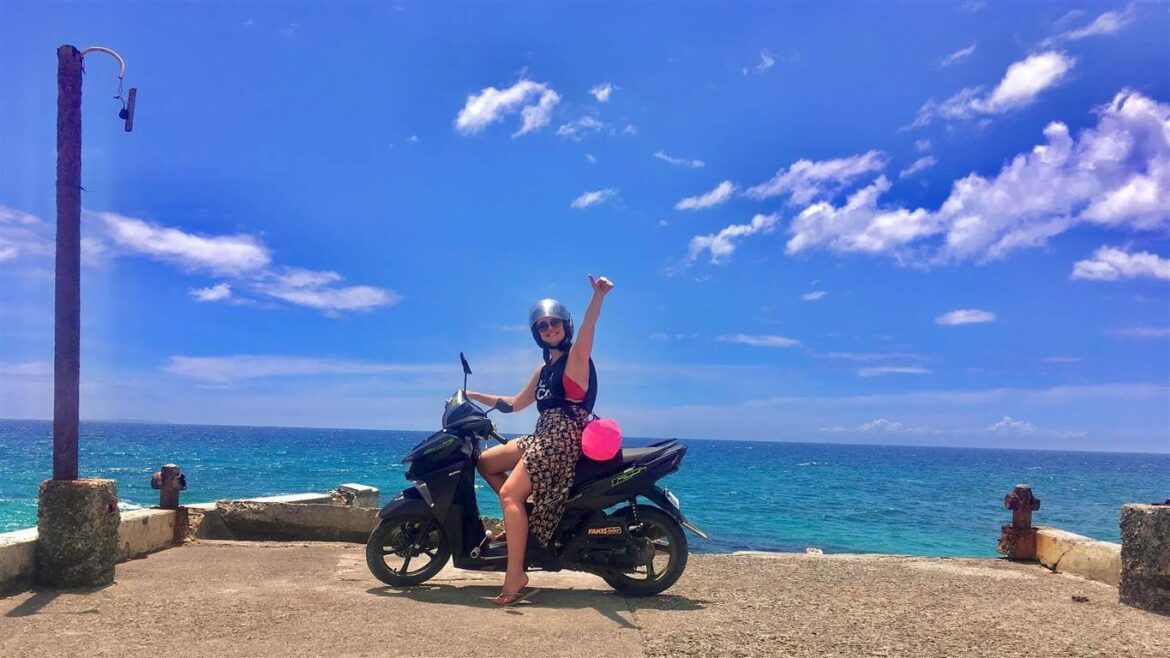
As I mention above, a lot of the tours of Bohol which include stops at the Chocolate Hills and the Loboc River Cruise also stop at the Loboc Tarsier Conservation Area. I anticipate that the reason they stop here instead of Corella is that the Conservation Area is on the main road from Tagbilaran to the Chocolate Hills.
Otherwise, you can hire a scooter and drive to the Conservation Area from pretty much anywhere on the island. As I mentioned above, this is what we did and we had a great time on our scooter. Take a look at our suggested itinerary here.
Please be gentle with the Tarsiers in Bohol!
As an endangered species, we are really lucky to be able to see the tarsiers of Bohol in an environment which is as close to their natural habitat as possible.
Whilst there are sceptics who say that the tarsiers are placed along the trail so that tourists definitely get to see them, the sanctuary is a great place to learn about these beautiful animals and help raise some money to protect them.
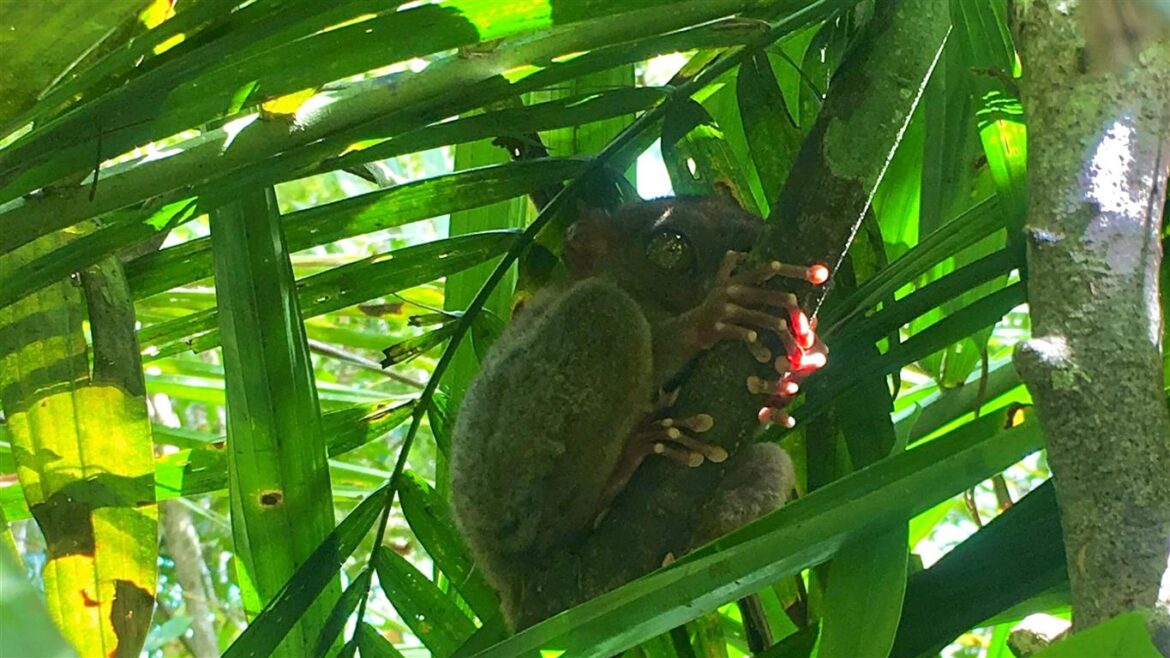
In my experience, the worst thing about the tour was the people. Despite being told not to use flash, not to get too close and to keep the noise down there we’re still people that struggled to follow these simple rules and whilst the guides were quite strict in telling people to back off, they shouldn’t have to.
If you’re going to see the tarsiers of Bohol, treat them kindly because they really are sensitive little creatures that are affected by our actions more than most other animals!
Where to Stay – Accommodation in Bohol
If you are heading to the Philippines and want to see the tarsiers in Bohol then here are some suggested places to stay in Bohol.
In truth, Bohol is quite a small island and so you can visit the tarsiers in Bohol from any of the popular tourist destinations.
If you want more ideas for accommodation in Bohol then check out my Mini-guide; Things to do in Bohol which has plenty more hostels, hotels and bungalows for your trip!
Loboc – Nuts Huts
Quite simply, one of the coolest places to stay in the whole of the Philippines! Built on the banks of the Loboc river, this oasis of calm is a back-to-basics approach to accommodation in Bohol which gives the perfect place to relax, and recover and is also very well located for the various things to do in Bohol including visiting the tarsiers in Bohol.
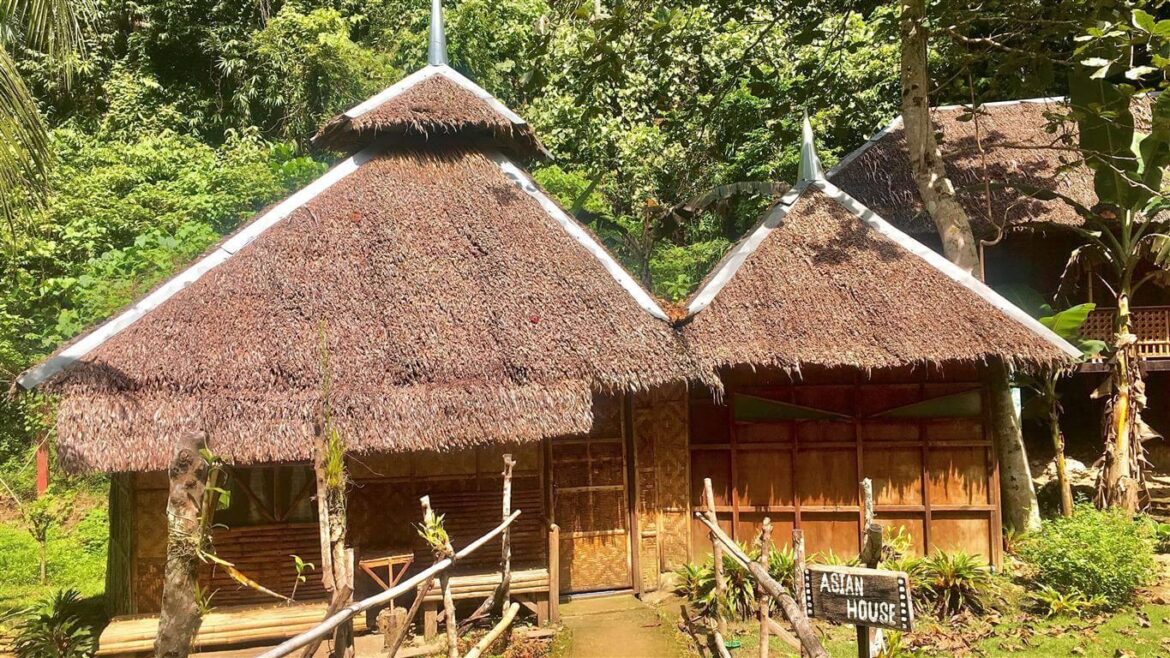
We loved Nuts Huts and it was the perfect stop off on our 3-day scooter itinerary in Bohol.
Nuts Huts comprises a number of huts (as the name would suggest!) along the bank of the Loboc river together with a huge reception/dining/social area built into the sides of the valley which offers an amazing place to relax on the hammocks and day beds with an unbelievable view of the river and the rainforest on the other side of the Loboc river. Coupled with some great food and amazing company, this really is bliss!
Panglao Island – Bohol Coco Farm
This low-cost hostel offers both dorm rooms and private bungalows and is well known for its sociable atmosphere and so offering some of the coolest accommodation in Bohol.
As well as somewhere to sleep, they also arrange great tours and rent scooters, which are both great ways to visit the tarsiers in Bohol!).
It’s the additional touches that make your stay great here, free breakfast, free coffee and drinking water and helpful and friendly staff on hand ready to make your trip relaxing and fun!
Tagbilaran City – Nisa Travellers Hotel
If you are staying in the capital city of Bohol then Nisa is a really great central hostel.
The rooms are basic but really clean, there is free wifi throughout and the staff are extremely friendly. They can organise anything for you from scooter hire to laundry cleaning; they even stored our bags for us whilst we went off to the Chocolate Hills for a few days!
Free tea, coffee and breakfast round off a great little place to stay in the city at a great price.
Anda – J&R Residence
If you want to treat yourself whilst in Bohol, then we would definitely suggest a stay at J&R Residence. Not only do they have a beautiful outdoor pool, but they have a private beach area along Anda Beach.
As well as offering water sports along the beach, J&R also book tours and can arrange scooter hire and so you will have no trouble booking your trip to see the tarsiers of Bohol!
Best time to visit the Tarsiers in Bohol
The weather in Bohol is split between the wet season and the dry season. In terms of temperature, the weather in Bohol is fairly consistent with hot temperatures throughout the year.
The weather in Bohol does not vary a great deal between the wet and dry seasons aside from the obvious rainfall. The rain may cool the temperature during the wet season, but it soon climbs again once the rain has passed.
The dry season runs, generally, from January to May with the wet season following from June to November.
During the dry season, the temperature will be between 28°C and 35°C during the day, with nighttime temperatures dropping very slightly to around 25°C. There is high humidity during the dry season.
As you would expect, tourist numbers increase during the dry season and so accommodation in Bohol and tours can become busier. That said, we generally found that the accommodation in Bohol was not usually fully booked when we arrived but if somewhere, in particular, does take your fancy then do book in advance. Tours run regularly during the dry season and so you should have no problem visiting the tarsiers in Bohol with an organised tour if you wish to do so.
As for the wet season, as I say the temperatures during the wet season do not vary much from those in the dry season.
Rainfall can be up to 5 inches a month during this period but if you don’t mind a bit of rain (and at these temperatures, the ground dries out pretty quickly after rainfall) then prices and tourist numbers are reduced which can give more flexibility.
Tours generally run during the wet season as they do during the dry season but if you have a tight schedule then do enquire in advance to be sure you can visit the tarsiers in Bohol on the day you wish.
For more details on the weather in Bohol then take a look at my Mini-guide; Things to do in Bohol which also includes details of the most popular festivals in Bohol which should be borne in mind when booking your trip!
For more advice on booking a trip to the Philippines generally, take a look at my Manual; Backpacking the Philippines.
Enjoy your trip!
Seeing the tarsiers of Bohol is an opportunity that shouldn’t be missed and when enjoyed with a trip to the Chocolate Hills or to Loboc is just one leg of a fantastic day of exploring Bohol. The tarsiers of Bohol are such an interesting species and one that has had a hard time of it over the decades.
Go and show them some support and visit the Corella Tarsier and Wildlife Sanctuary so that they can continue their conservation efforts & protecting the tarsiers of Bohol!
Disclaimer: My blog contains affiliate links. If you buy something through these, I get a small commission at no additional cost to you. Thank you x
Follow me on Socials below or pin this Highlight for inspiration for your next trip!

